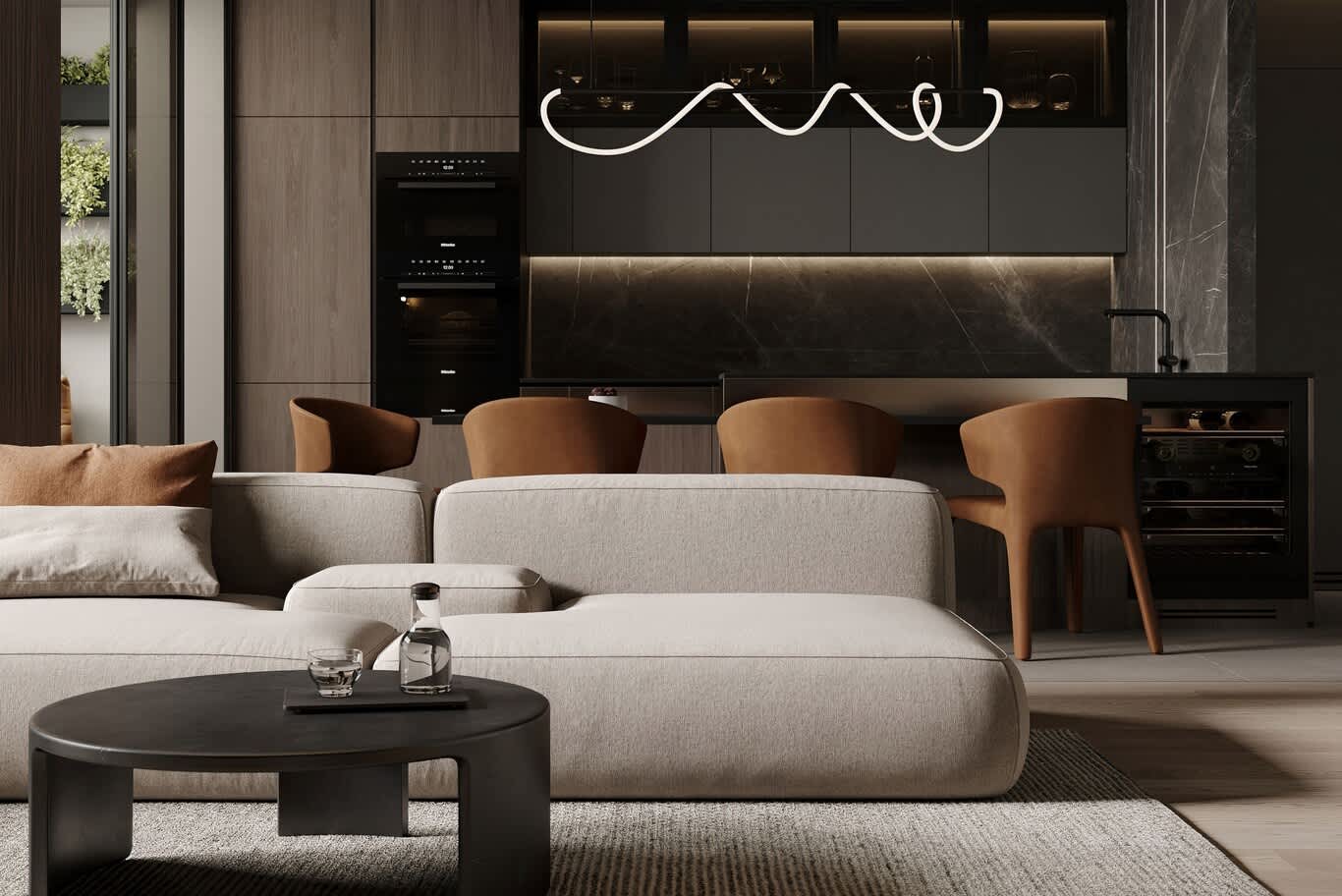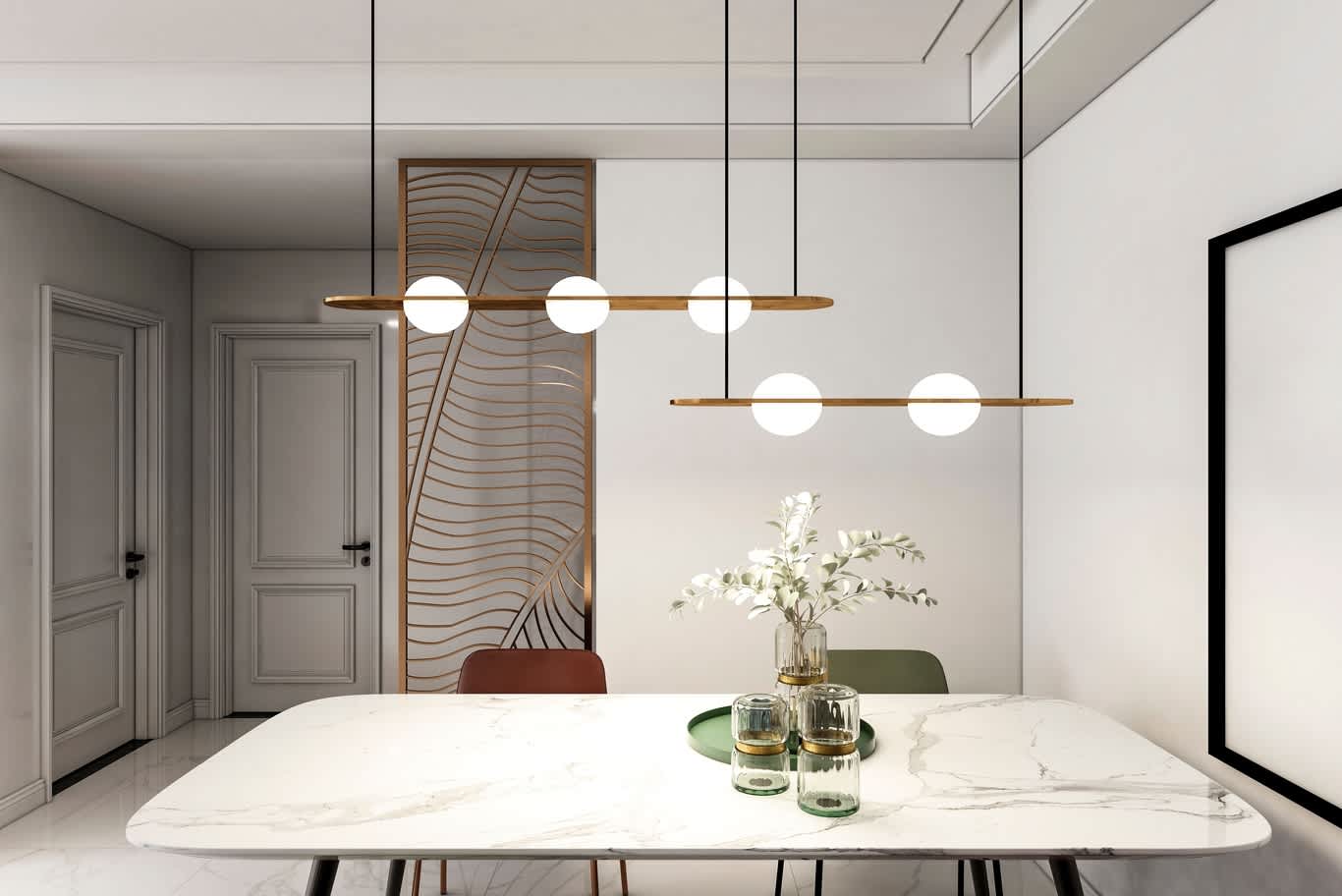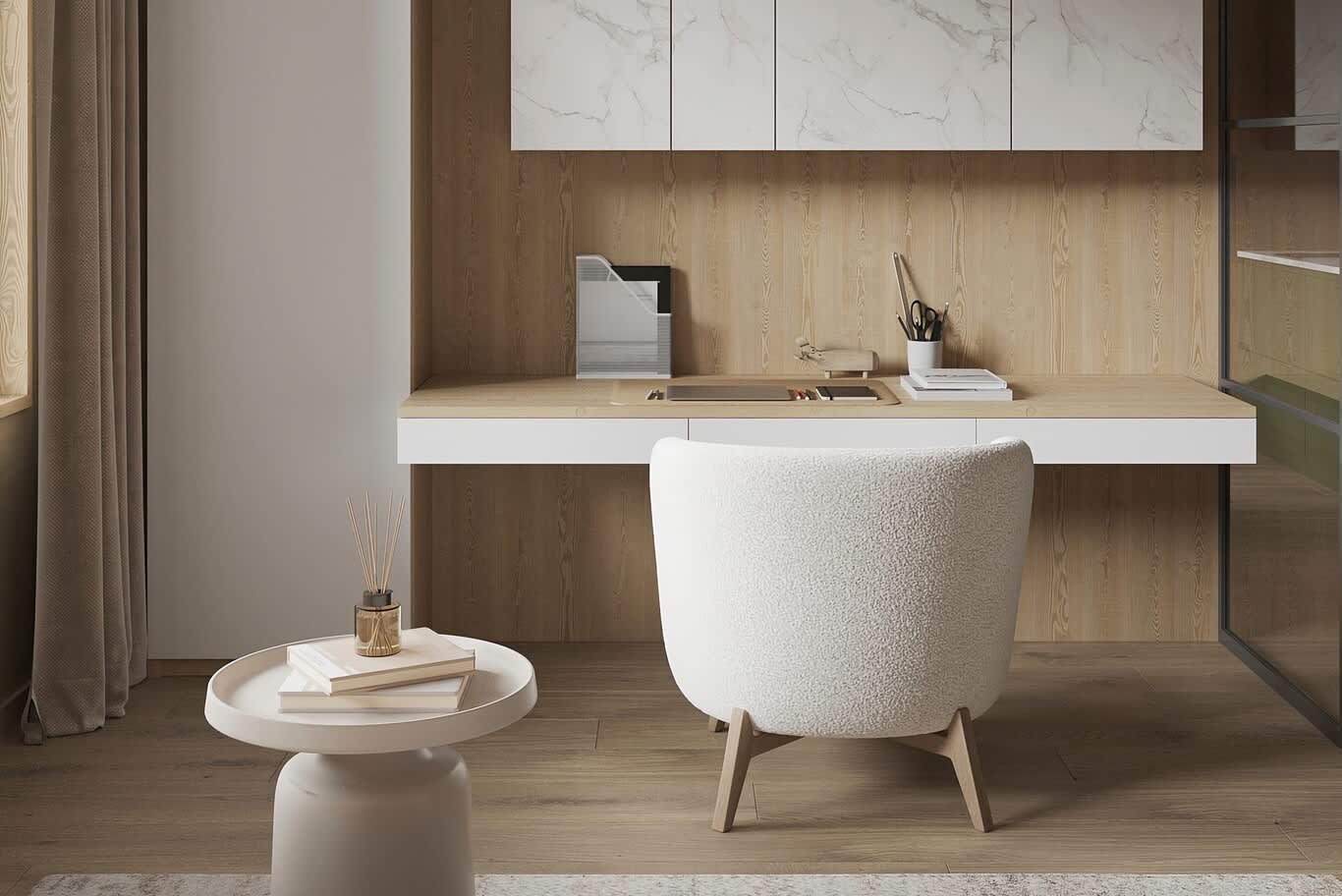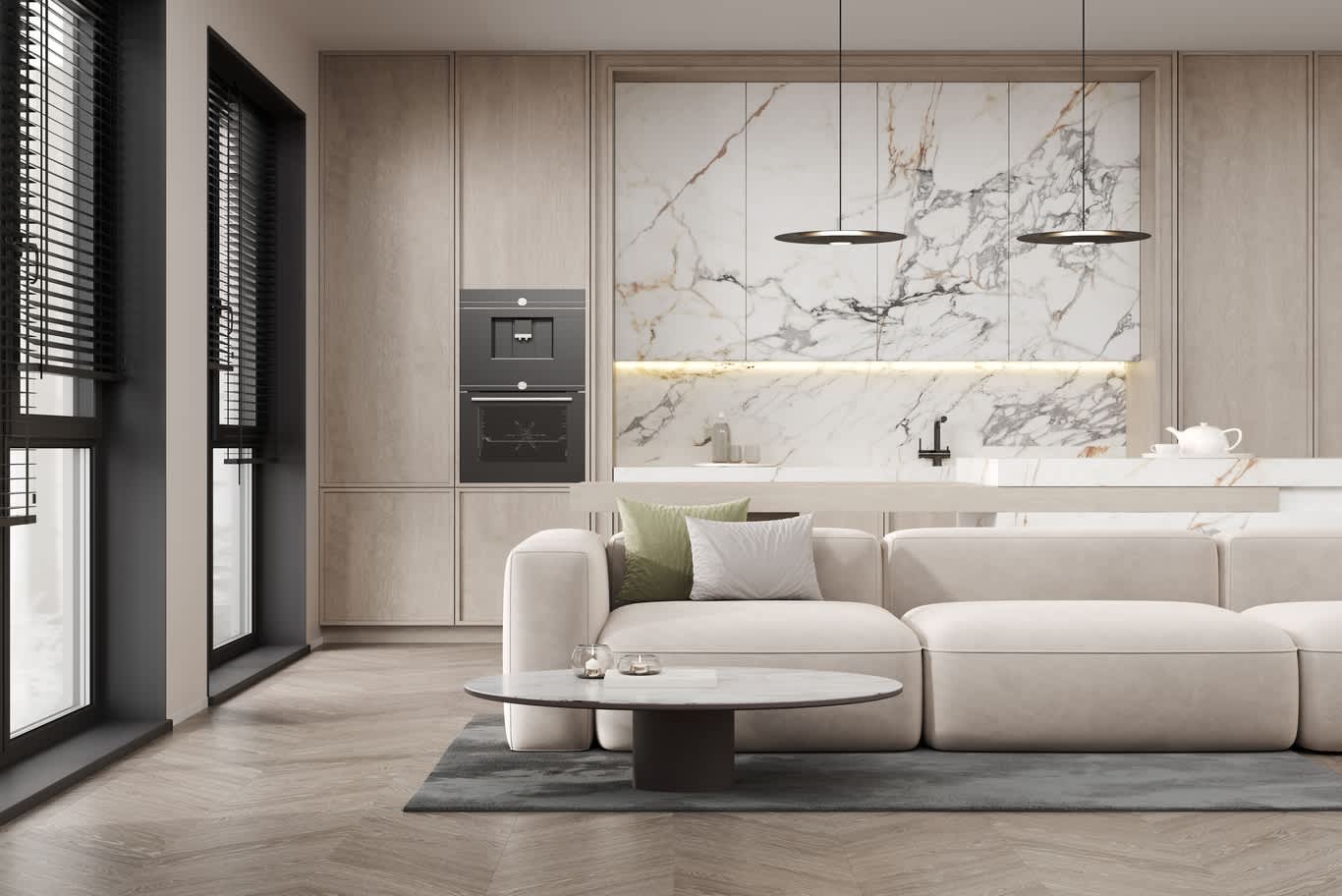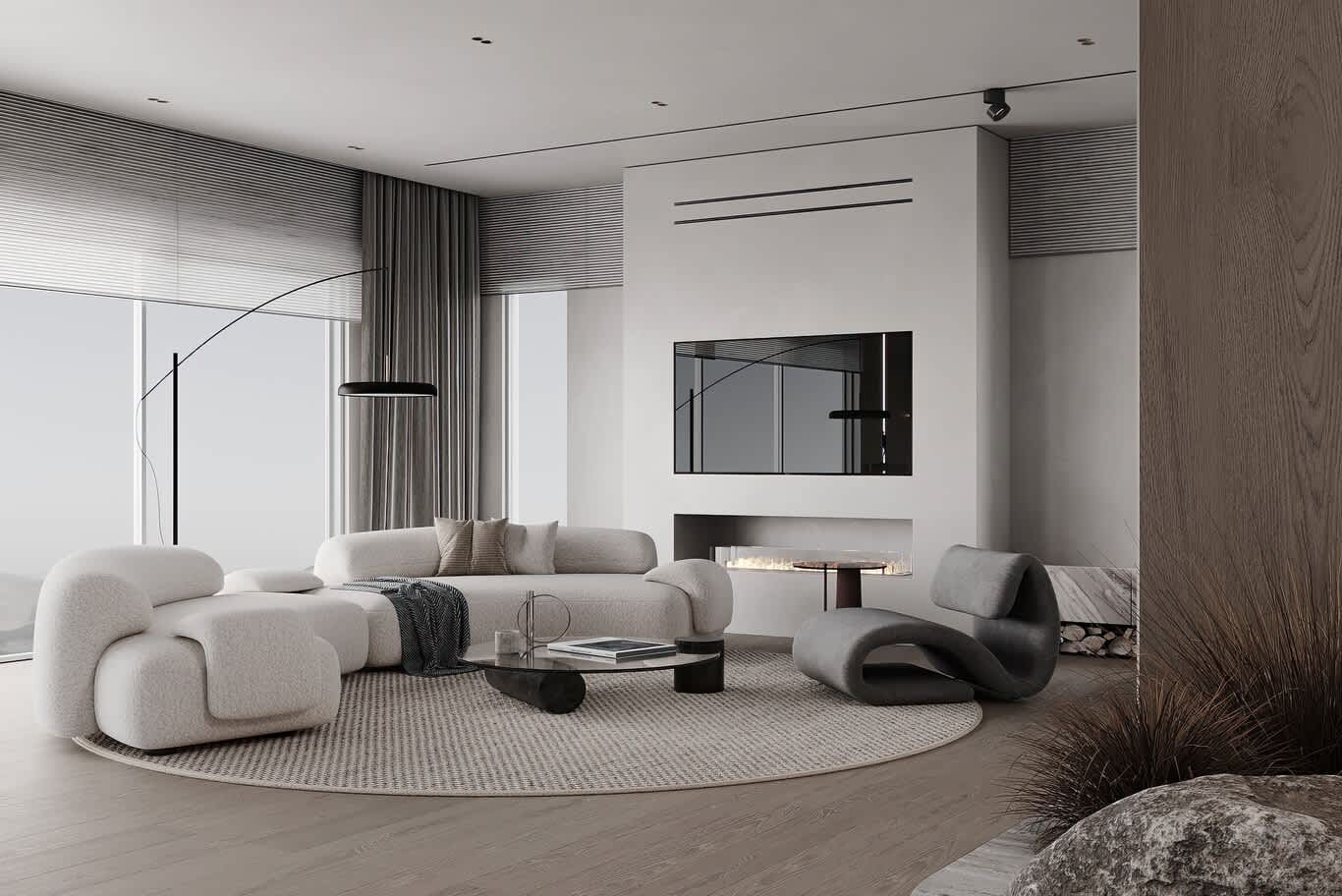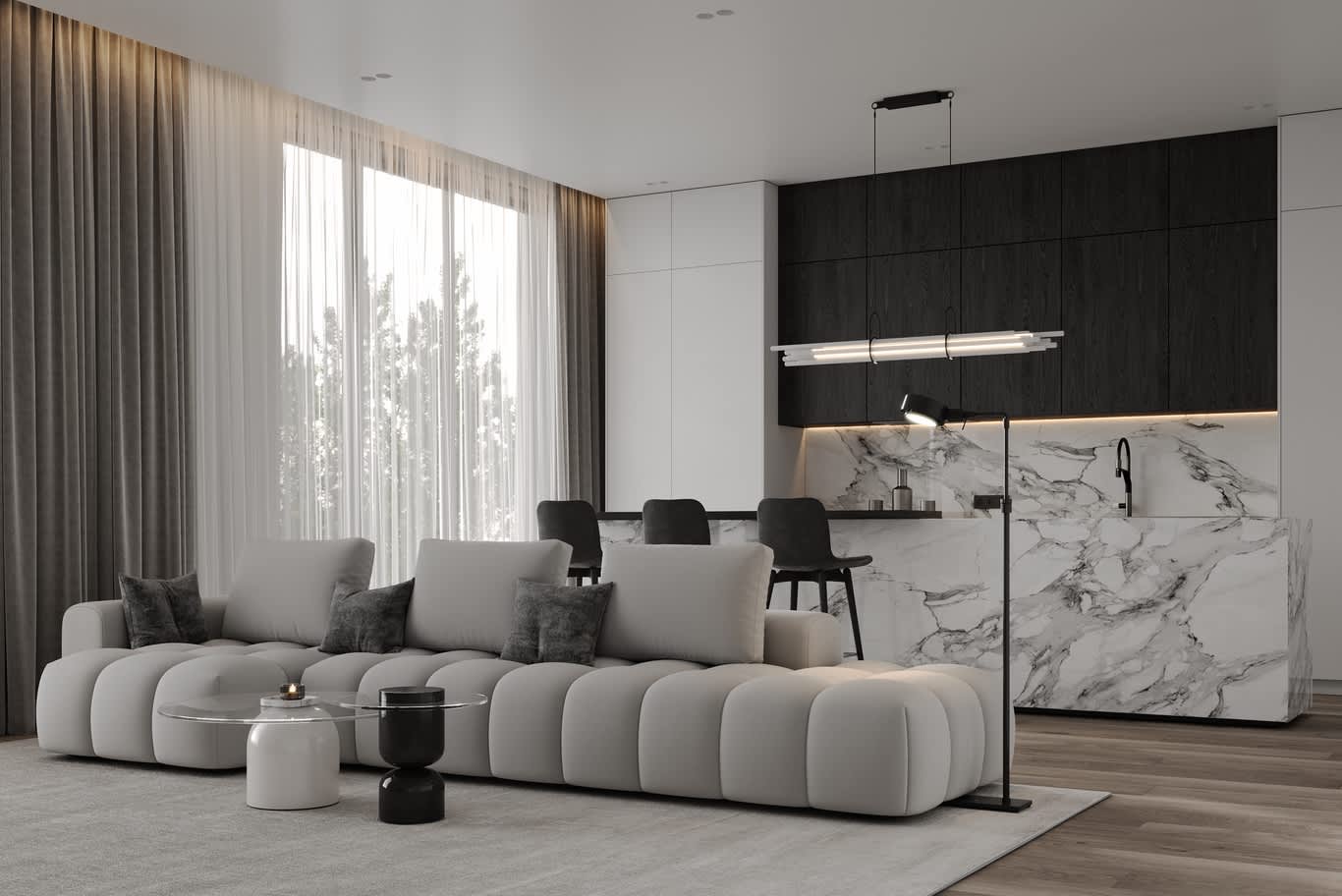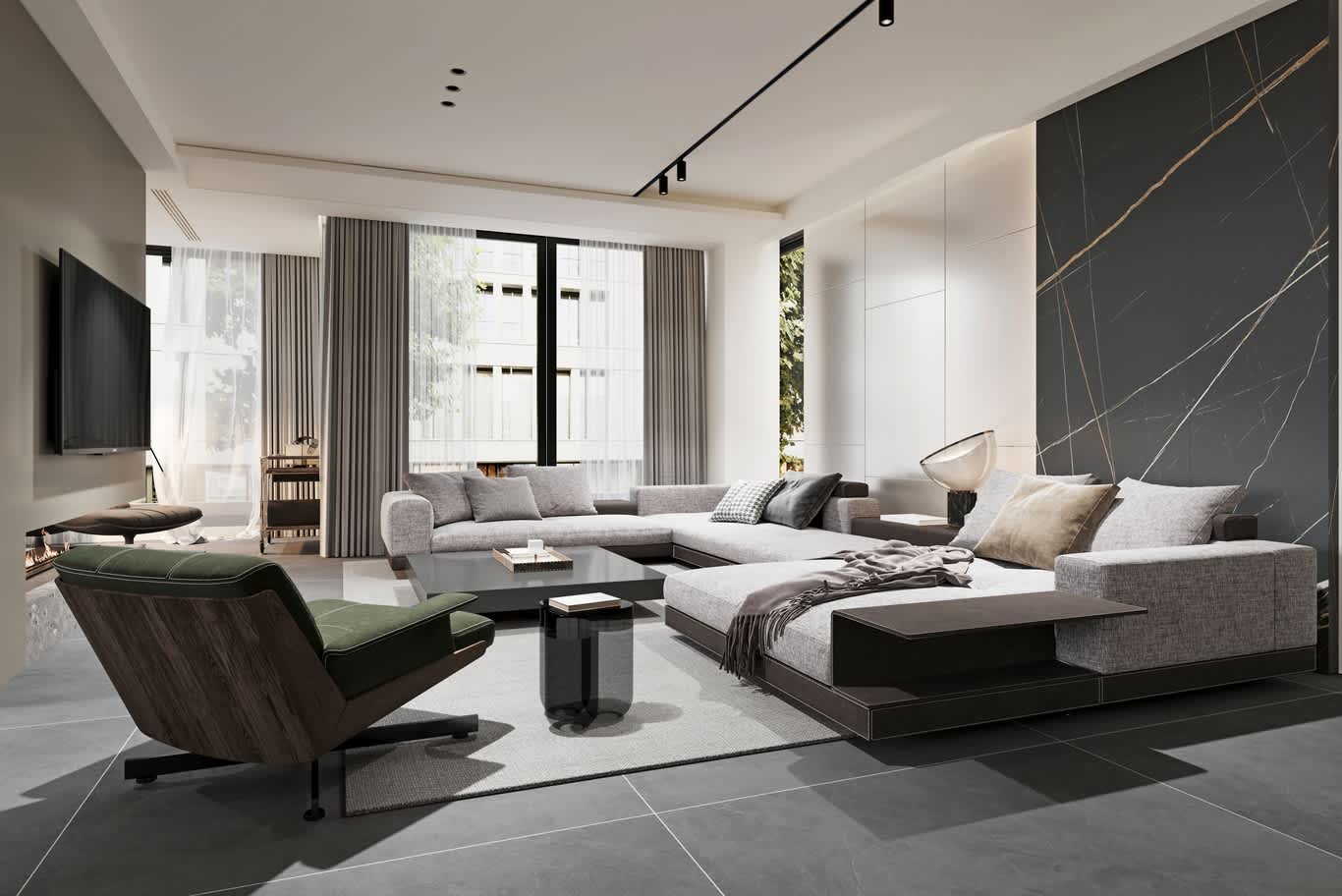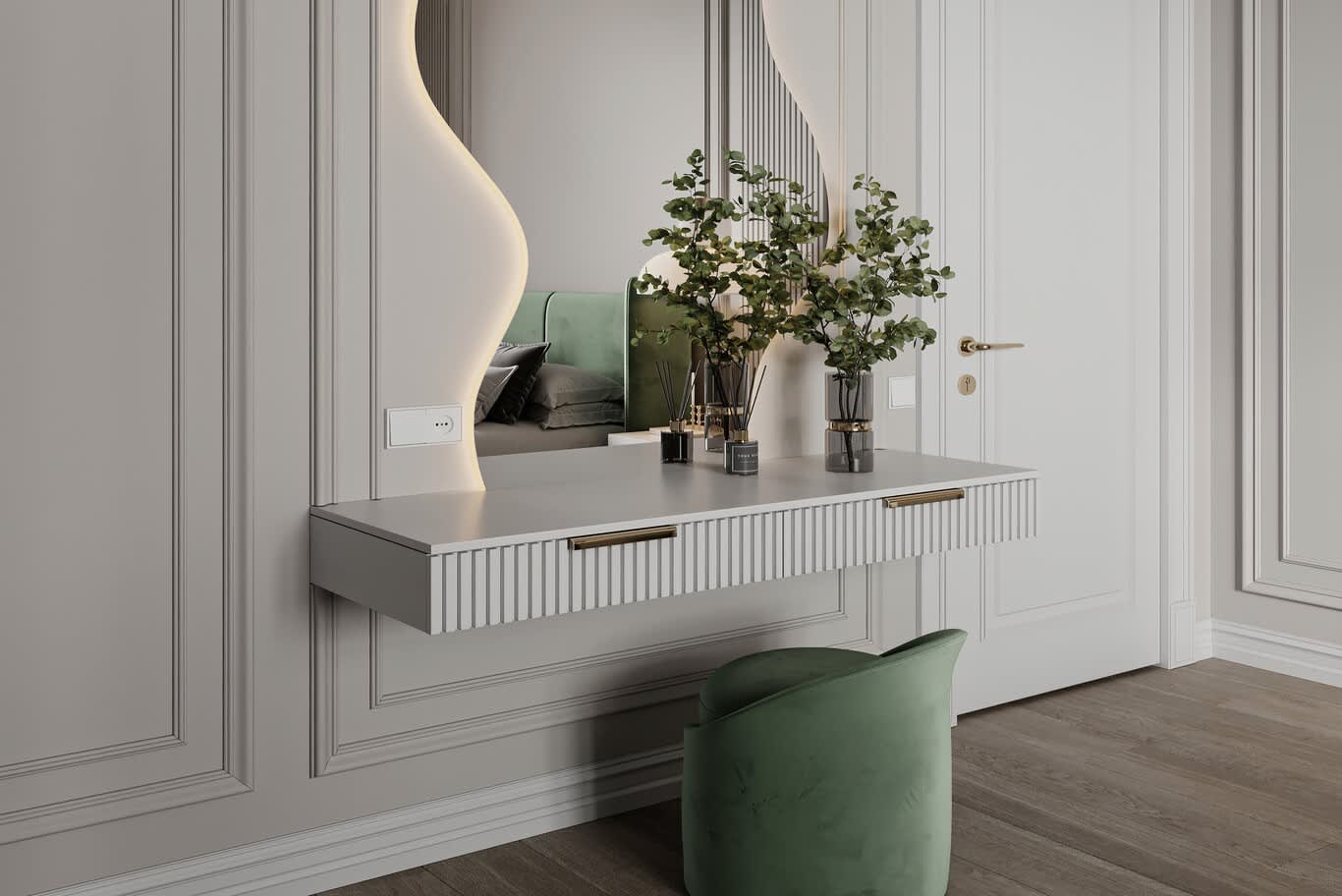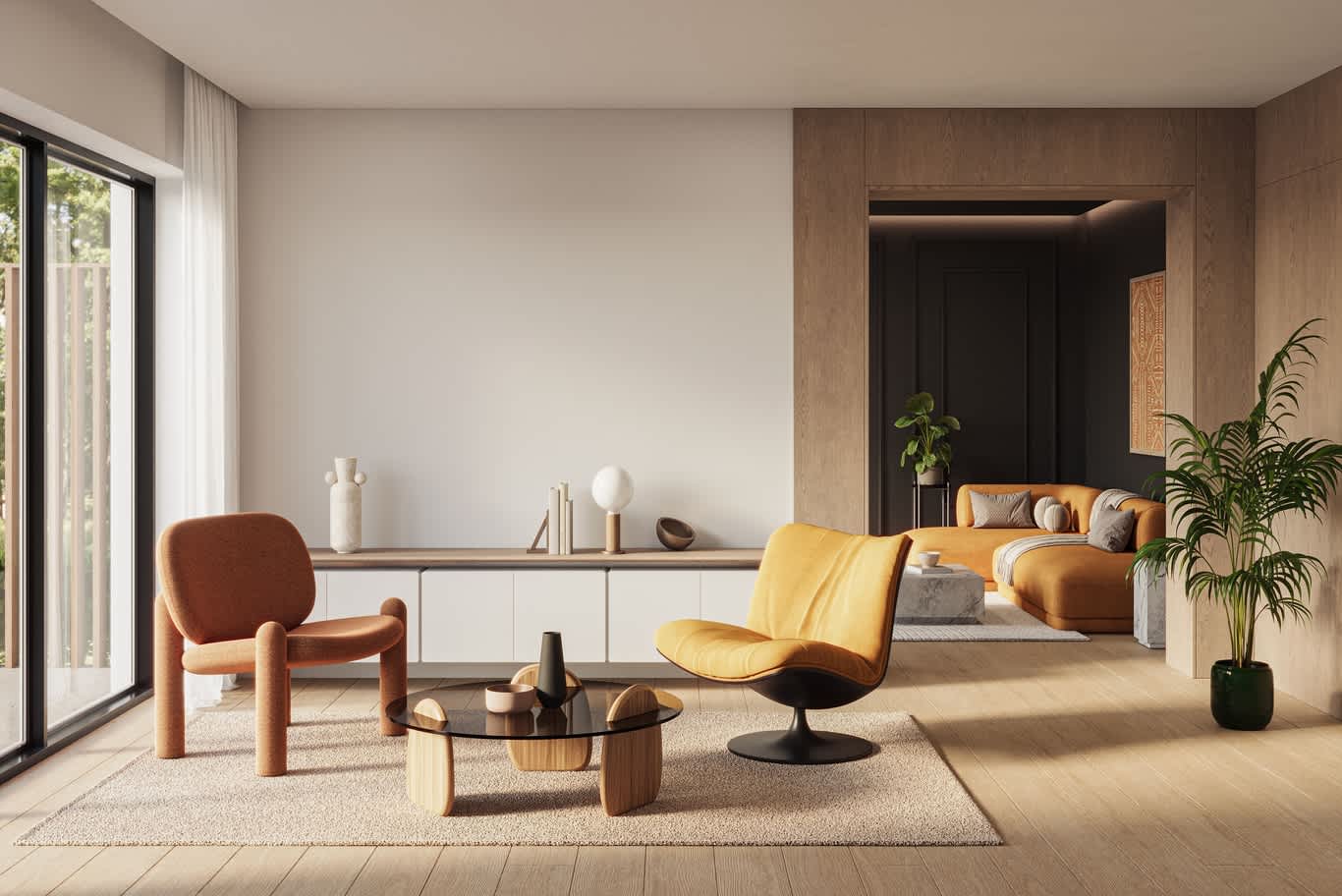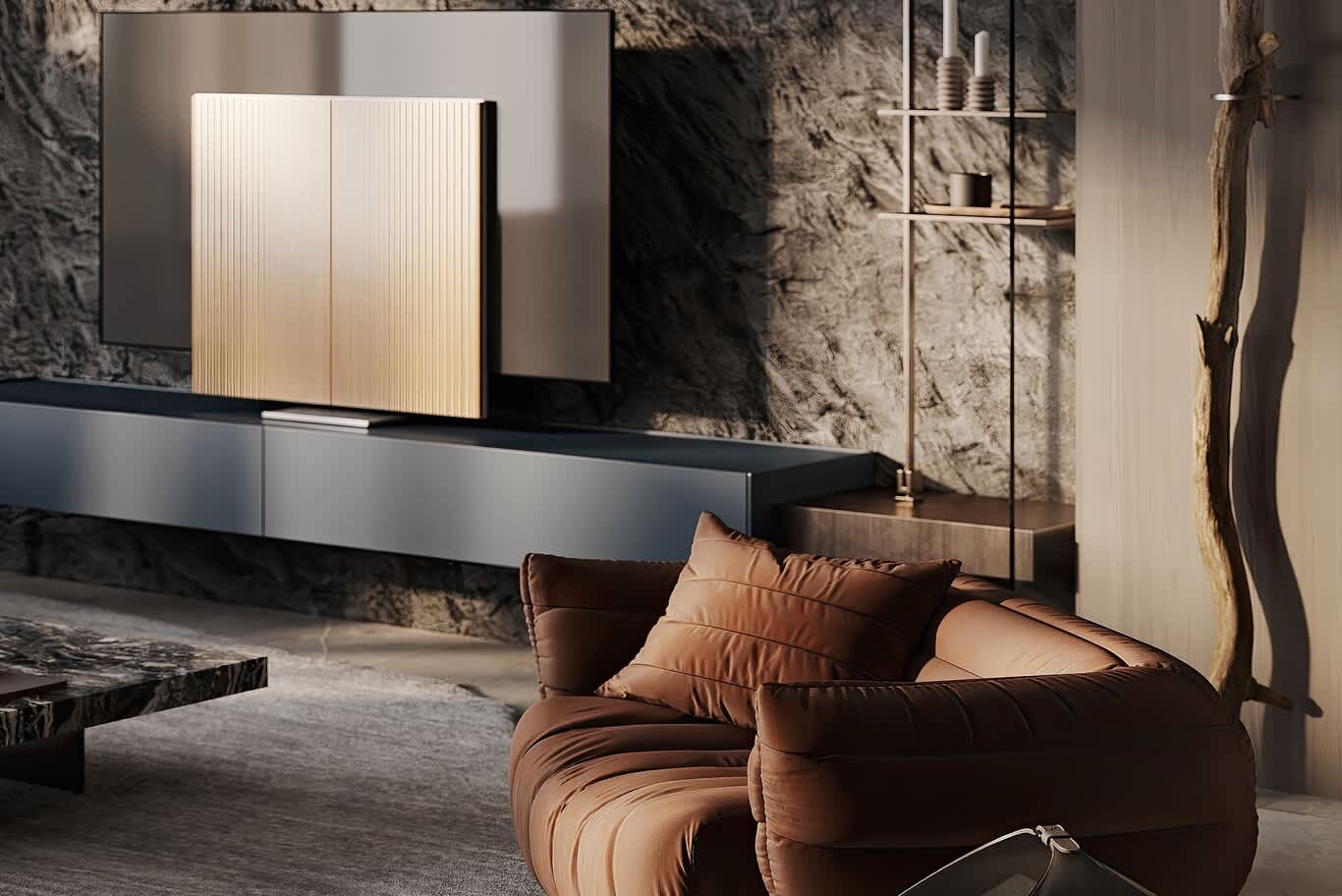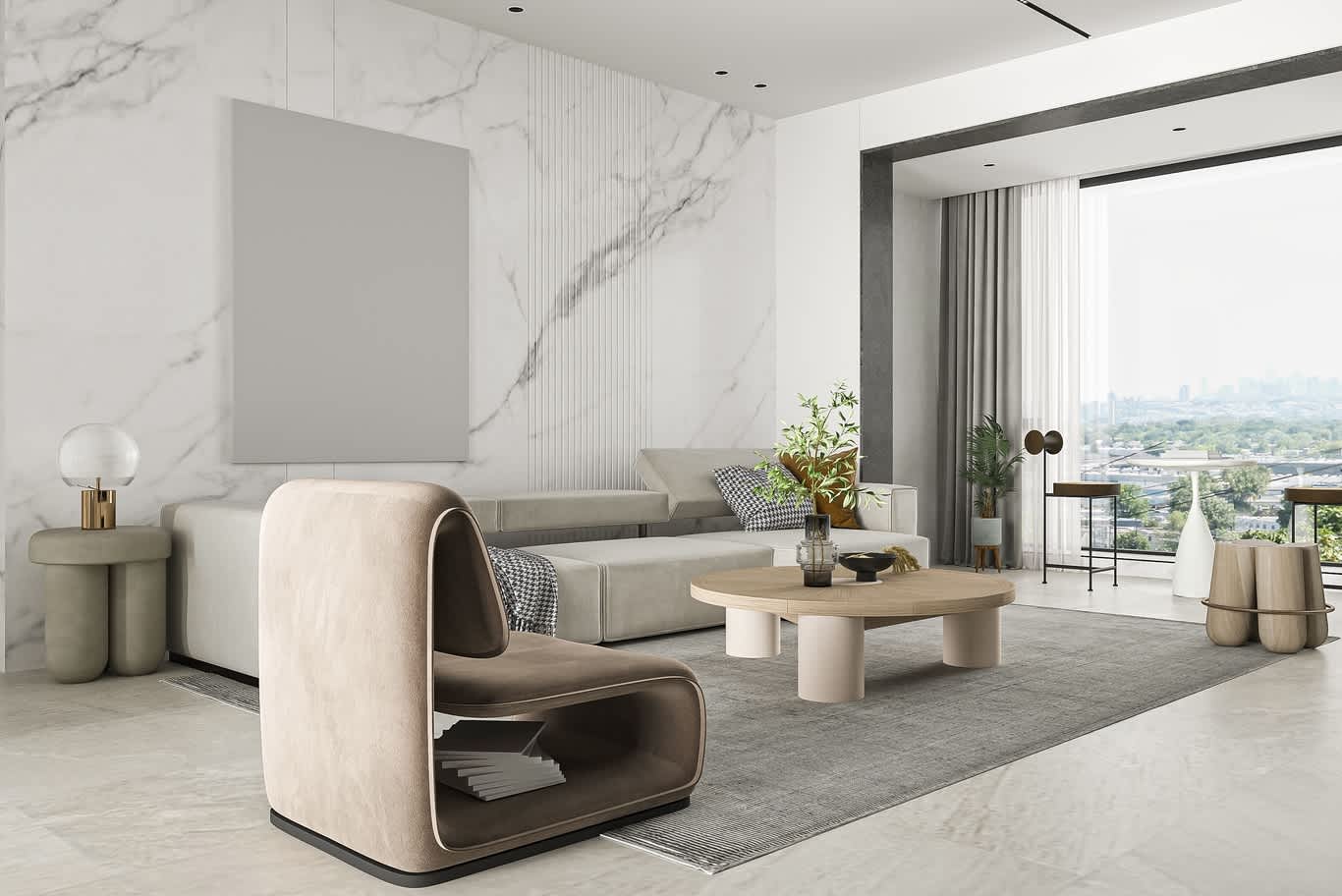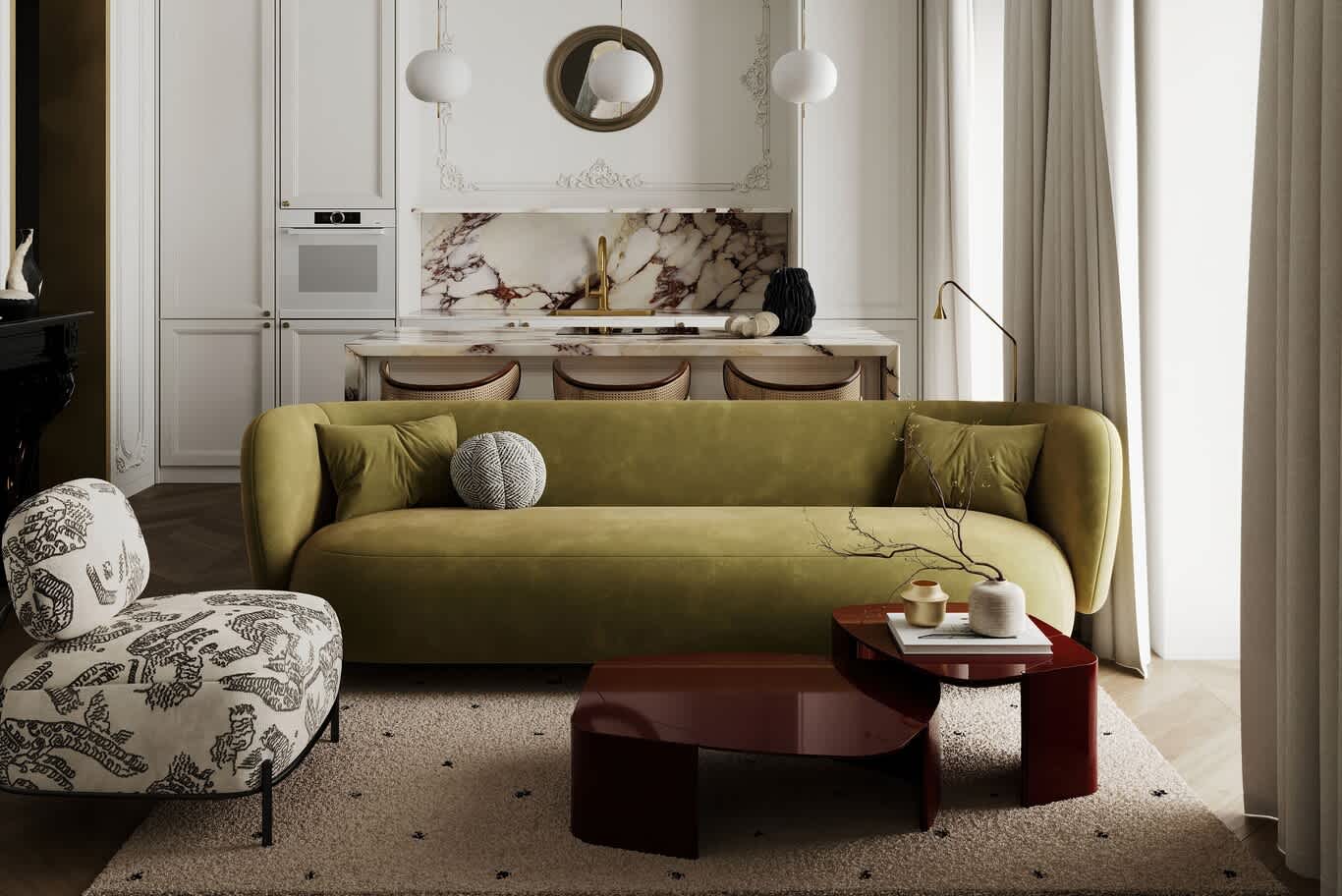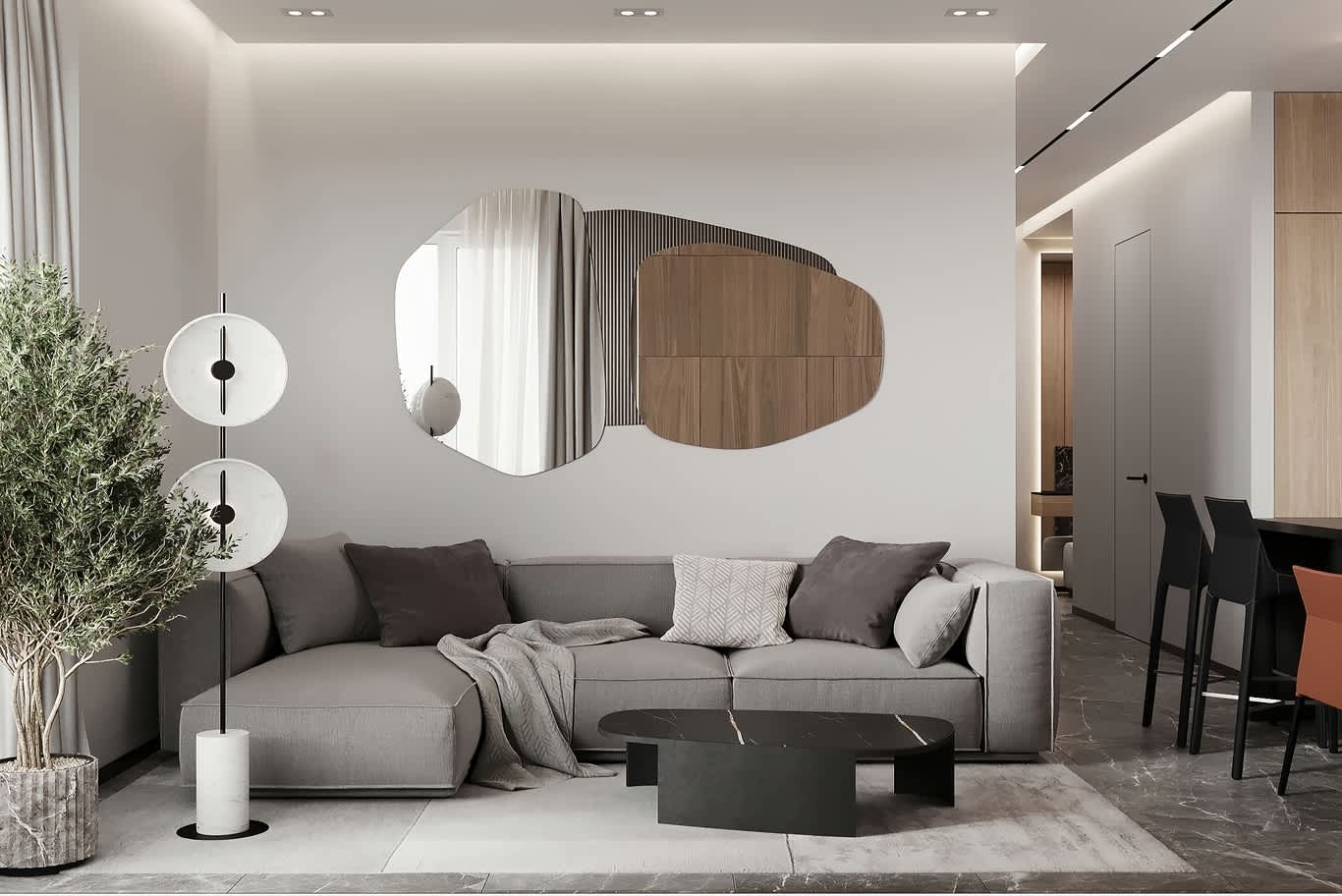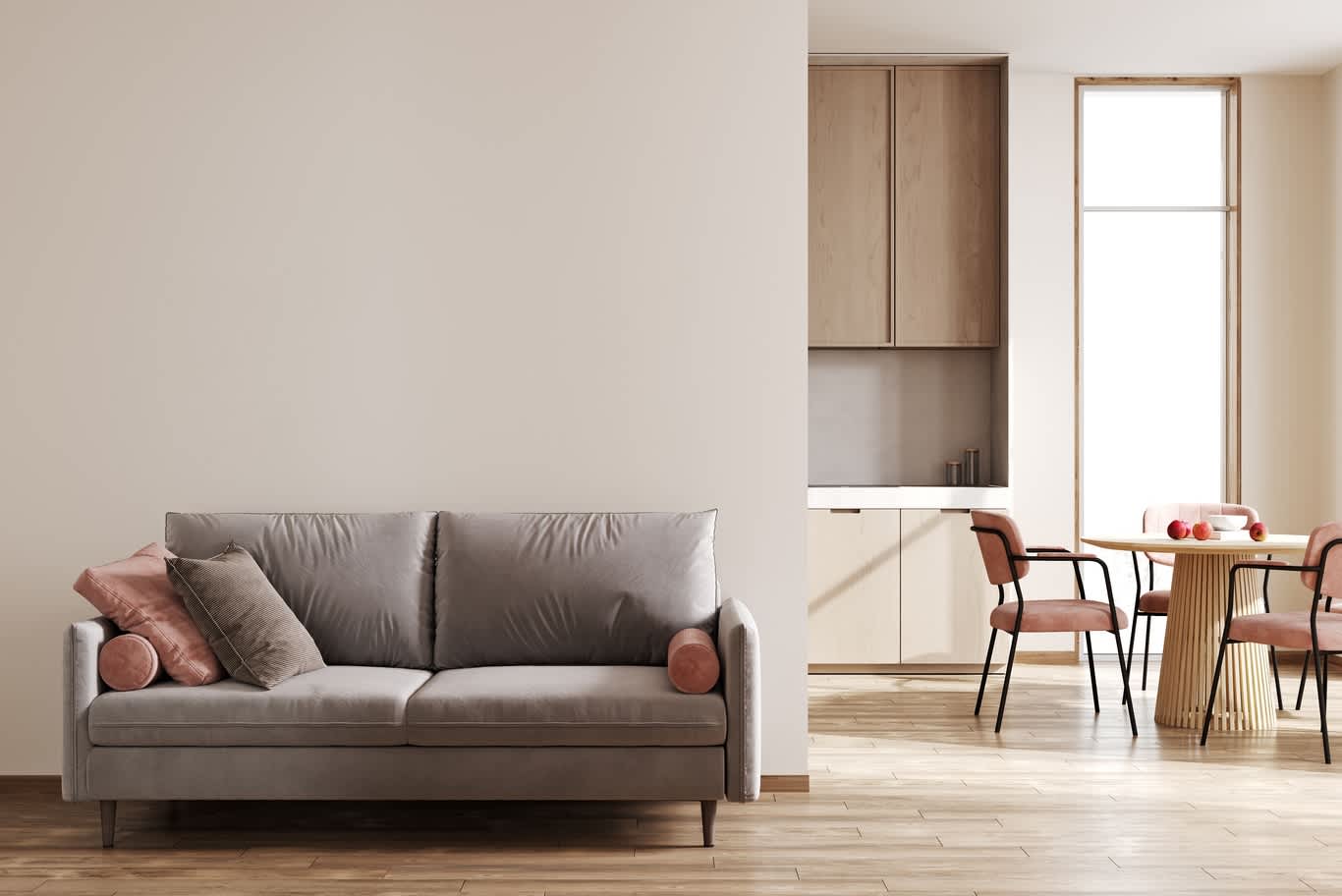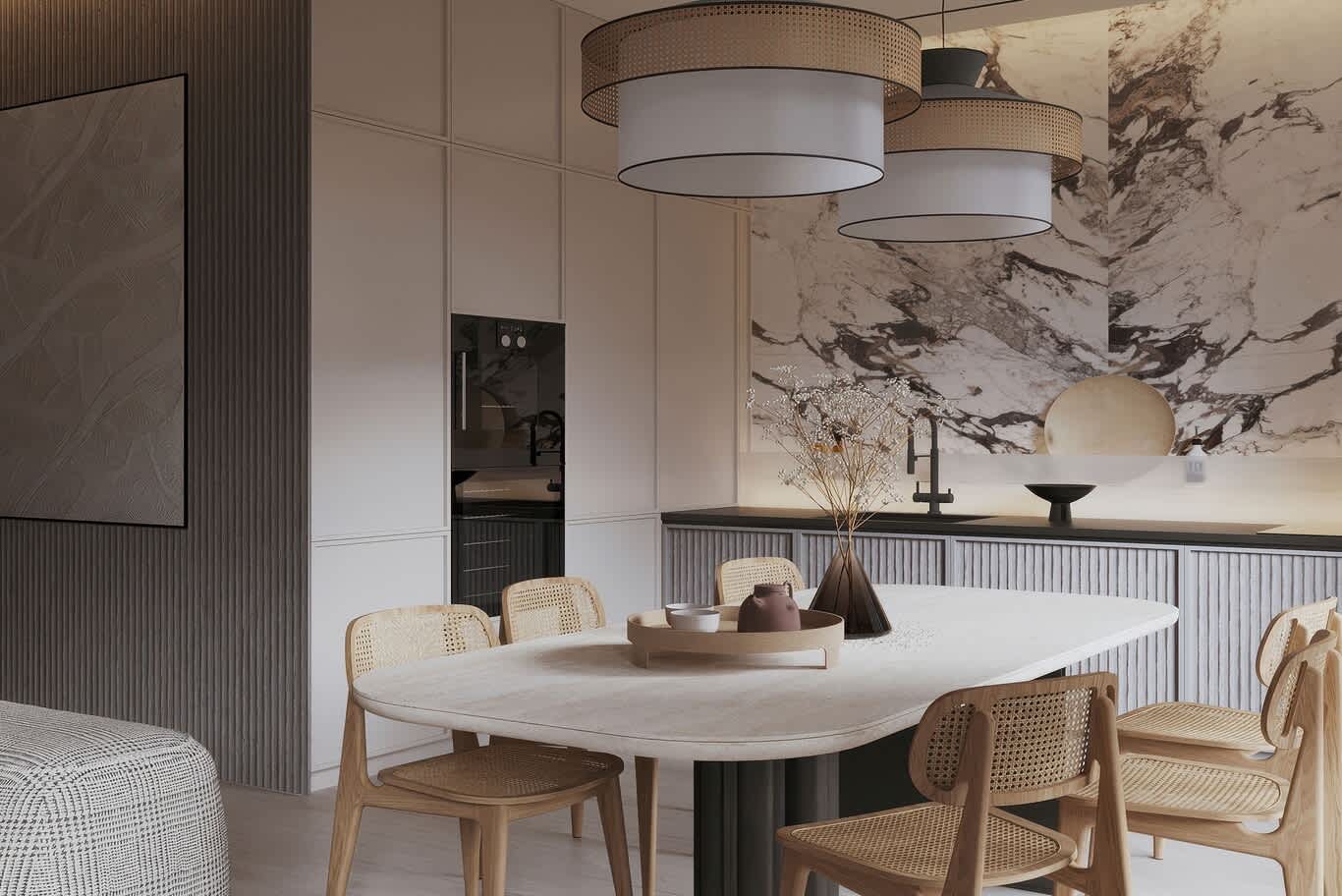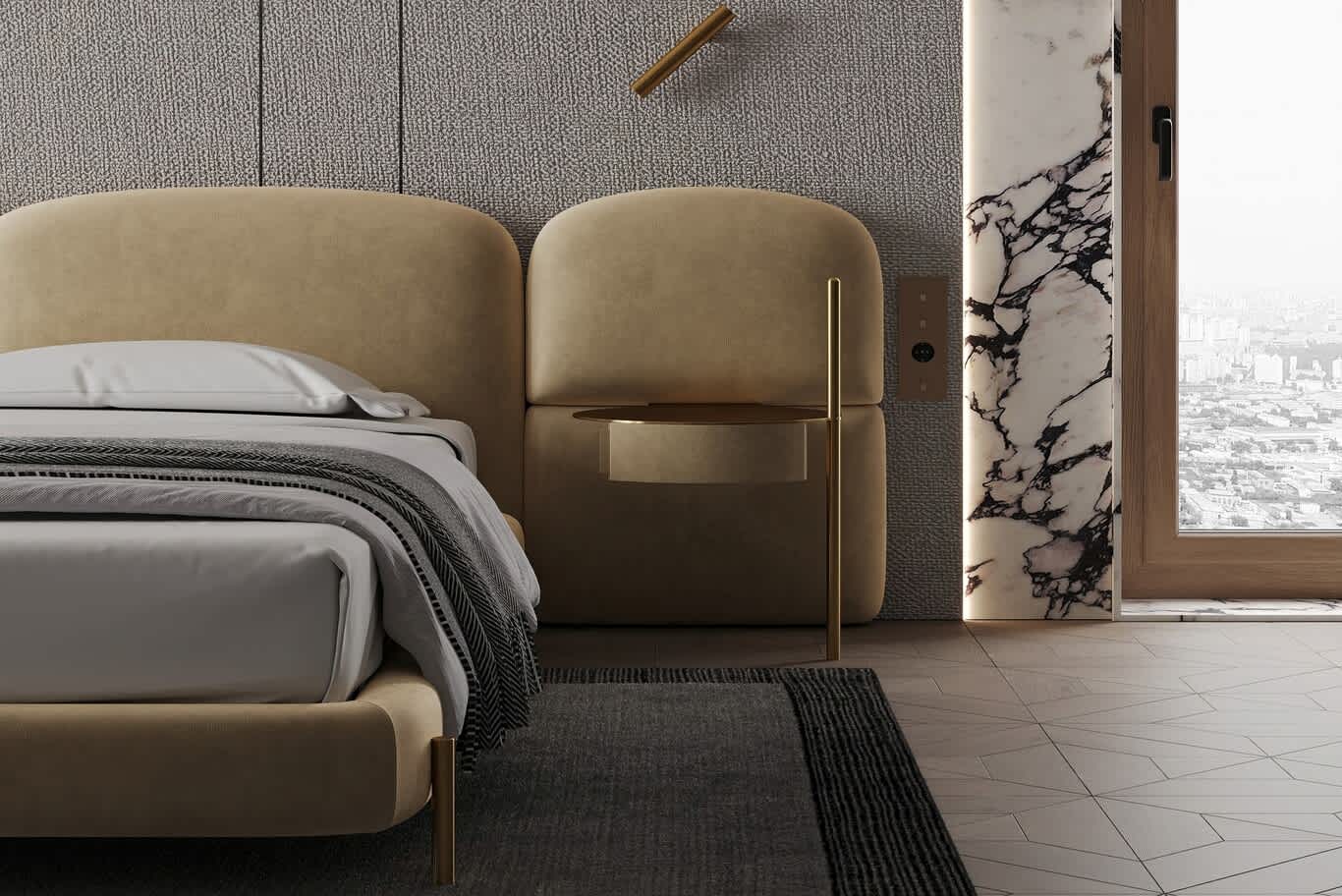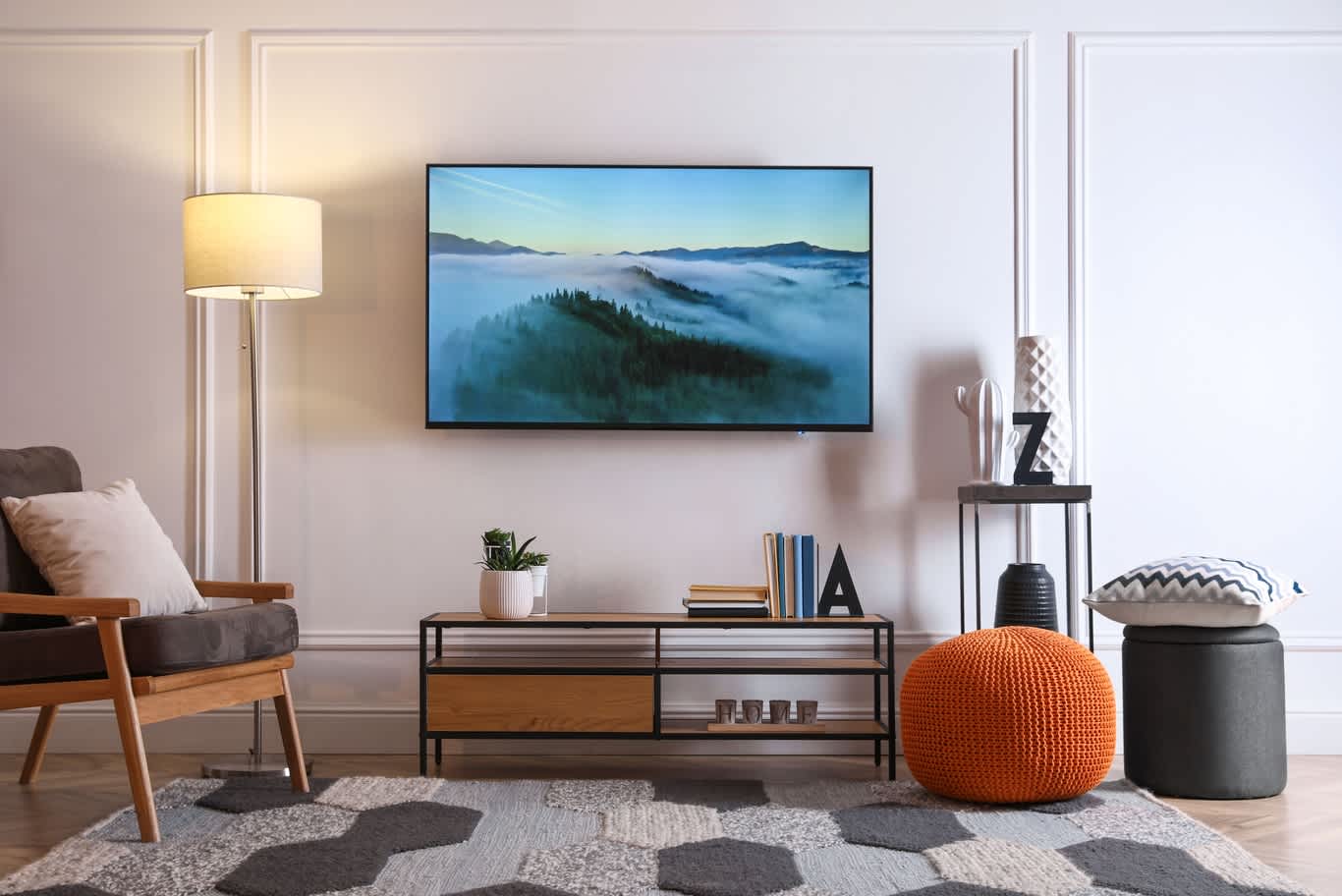Home Page | Blog | Top Ten Ideas For A Small Interior Design
Top Ten Ideas For A Small Interior Design
10/7/2025
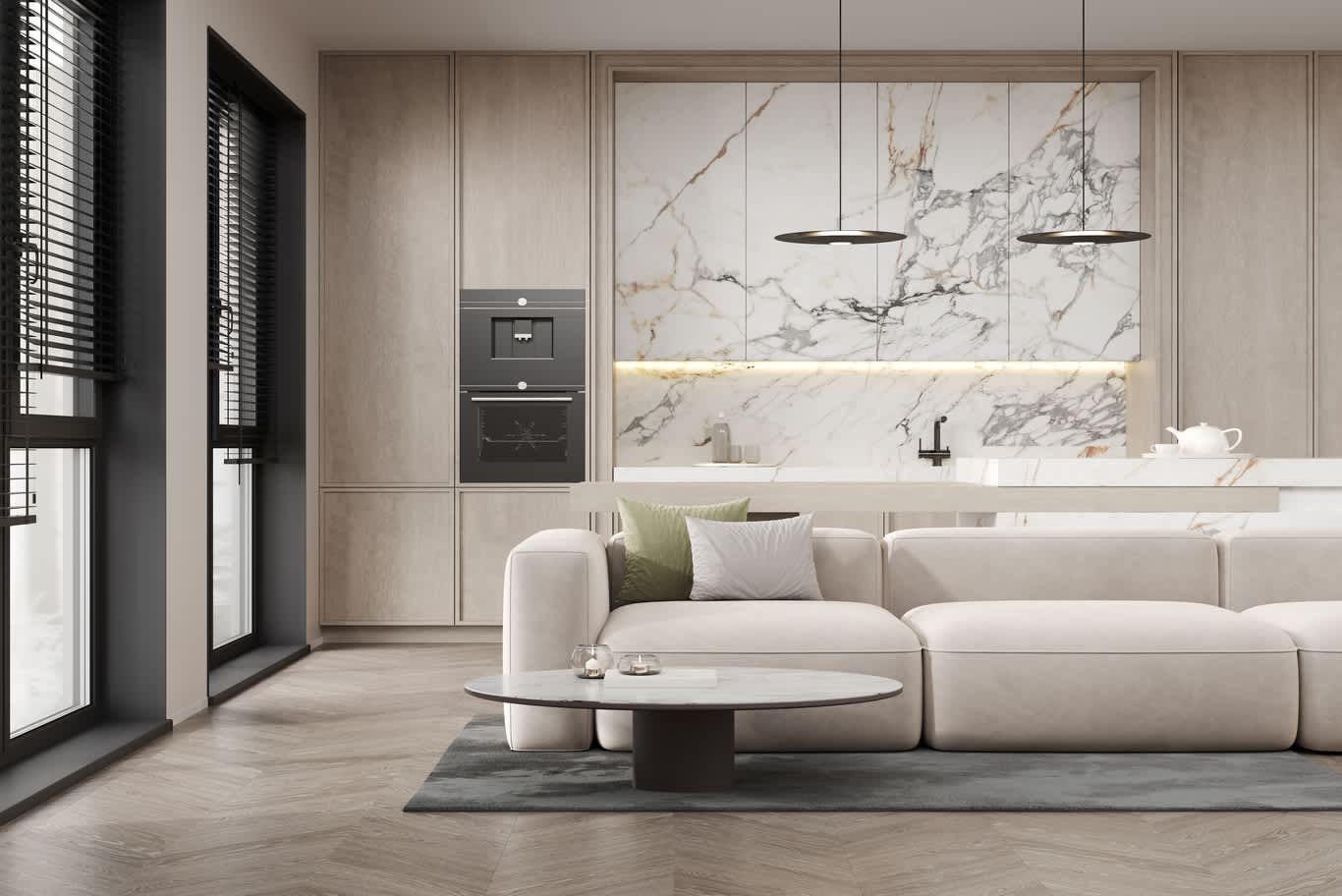
Small spaces demand smart design. But they also give you a chance to be creative and efficient. What you need is good planning, clever choices, and right inspiration.
In this blog, Algedra designers show you ten real ideas that you can apply immediately. You’ll see how each one works. Later, we include examples from Middle East / North Africa to inspire you with regional flavor.
Why Small Interiors Demand Thoughtful Design
Small interiors expose every mistake. Poor scale, clutter, or dark corners are magnified. But when done right, small spaces can feel cozy, elegant, and efficient.
A good design strategy for small interiors must:
Maximize perceived space
Hide clutter
Use light and reflection
Be flexible
With that in mind, let’s dive into 10 ideas you can apply now.
1. Light Base Colors + Accent Depth
Why it works
Light, neutral shades make walls recede. That makes the room feel larger. Then accents define personality without crowding.
How to apply
Paint walls, ceiling, and trim in one light hue (off-white, cream, pale gray).
Use one accent color (terracotta, teal, or deep green) in small doses — a cushion, vase, or small cabinet.
Keep the floor in a light wood or neutral tile.
Don’t use too many accent colors — 1 or 2 is enough.
Example: In a small flat in Istanbul, designers often use pale off-white walls, then add copper lanterns or Turkish rug accents.
Read more about our inspiring townhouse interior designs in London
2. Maximize Natural & Artificial Light
Why it matters
Light, bright rooms feel bigger. Shadows and darkness create visual heavy spots.
How to apply
Choose sheer curtains or roller blinds instead of heavy drapes.
Use mirrors to bounce light to dark corners. Place mirror opposite or near a window.
Use layered lighting: ceiling light, wall sconces, floor lamps.
In corners, use uplights (light pointed upward) to lift the ceiling.
If possible, use narrow windows or skylights.
Application tip: In a very narrow room, place a full-length mirror at the far end to mirror the room’s depth.
3. Multi-Functional Furniture
Why it helps
Every piece must justify its space. Multi-use furniture reduces clutter and waste.
How to apply
Use a sofa bed or futon.
Use a console table that opens onto a dining table.
Get coffee tables or ottomans with hidden storage.
Mount a fold-down desk on the wall.
Use nesting tables: you pull out only what you need.
Application tip: In your living/dining room combo, use a dining bench that tucks beneath the table. That frees floor when not in use.
4. Vertical Storage & Wall Use
Why it’s effective
Floor space is precious. Walls are often underused.
How to apply
Use tall shelving units.
Install floating shelves above head height.
Use wall hooks and pegboards.
In kitchens or bathrooms, mount cabinets up to ceiling.
In sleeping areas, loft the bed and use the under area for workspace or storage.
Application tip: Over a sofa, put slim wall cabinets that blend in with wall color, so they don’t feel heavy.
5. Light & Transparent Furniture
Why it gives “breathing room”
Heavy or solid pieces block view lines and make the space feel boxed. Transparent or light forms help the eye pass through.
How to apply
Use acrylic or glass tables.
Choose chairs with open metal frames.
Use shelving with wire frame or glass shelves.
Use furniture with legs so you look under them.
Application tip: Use a glass coffee table in a small living area so you can see rugs or floor pattern under it — it doesn’t interrupt the view.
6. Define Zones with Rugs + Lighting
Why you need zones
Even small homes often serve multiple functions (living, dining, working). Zones help the brain distinguish each area.
How to apply
Use a rug to anchor a seating area.
Use a pendant above dining.
Use directional lighting (spotlights or wall washers) in work areas.
Use a color or texture difference (wood vs tile) to separate zones.
Application tip: In a studio, use one rug for seating, another subtle rug for dining — same tone but different texture.
Find practical tips in our post: Effortless Elegance – Achieving a Luxurious Interior Design on a Budget
7. Hidden Storage & Concealment
Why it matters
Visible clutter is the enemy in small interiors.
How to apply
Build drawers under beds.
Use built-in cabinetry.
Use storage benches, ottomans with lids.
Use sliding doors or flush panels to hide storage.
Hide cables behind walls or inside channels.
Application tip: In the entryway/entrance, use a wall panel with hidden hooks behind flush doors to hang coats without visible clutter.
8. Mirrors & Reflective Surfaces
Why it expands space
Mirrors reflect light and view, doubling perceived space.
How to apply
Use one large mirror or multiple smaller ones.
Use mirrored closet doors.
Use furniture with glossy or mirrored surfaces.
Use metallic or glass backs on cabinets.
Application tip: In a narrow corridor, line one wall with narrow vertical mirrors to visually widen the hallway.
9. Smart Layout & Traffic Flow
Why layout is critical
Poor arrangement makes small rooms feel cramped.
How to apply
First, measure everything (doors, windows, circulation path).
Use mock layout (tape on floor) before buying.
Don’t push furniture flush to walls always — a few inches away can help balance.
Leave clear walking paths at least 60–70 cm wide (or local comfortable width).
Use furniture as soft dividers (back of sofa, open shelves) rather than walls.
Application tip: In a living/dining space, place the sofa so its back faces the dining area, with a rug under sofa defining that zone, but leave a walking gap behind it.
10. One Strong Focal Element
Why it works
In small rooms, too many competing pieces confuse. A single strong element gives visual anchor.
How to apply
Use a statement pendant or chandelier (but scale-appropriate).
Use one bold piece of art or mural.
Use a dramatic rug or pattern wall.
Use one vividly colored chair or piece.
Application tip: If your room palette is neutral, use a single patterned accent wall behind the sofa to draw attention, but keep the other walls calm.
MENA Region & City Examples: Local Flavor You Can Use
To make your small interior more unique and regionally rooted, here are ideas drawn from the MENA region:
Tradition & Modern in MENA Interiors
Designers in MENA are mixing modern design with heritage elements. In cities like Dubai, Riyadh, Amman, Cairo, Marrakech, modern minimalism gets mixed with Middle Eastern motifs, Arabic patterns, and local materials.
For instance:
Use geometric Arabic motifs as accents on cushions, rugs, or wall tiles.
Use mashrabiya (wooden lattice screens) as room dividers or window screens. These screens filter light, provide privacy, and cast beautiful patterns.
Use local materials like stone, plaster, clay, or native wood to bring warmth and place identity.
In Gulf cities, the traditional barjeel (wind towers) or courtyard designs inspire passive cooling and spatial planning, especially useful in hot climates.
Small Apartment in Istanbul & Turkey Influence
Istanbul provides a relevant regional example because of its density and small flat culture. In Istanbul, designers often use light base colors and incorporate Turkish rugs, copper lighting, and mixed modern/traditional touches.
If you live in Cairo, Beirut, Amman or Casablanca, you can adapt the ideas this way:
Use patterned Moroccan tiles in a small kitchen splash.
Use minimal mashrabiya panels inside to separate a sleeping zone.
Use brass or copper lanterns in your living space for mood lighting (they are common in many MENA homes).
In older buildings in Cairo, often walls or windows have arches — you can accent those arch forms in decor (mirror shape, wall cutouts).
Sample Application: A 25 m² Apartment in Amman
Let us walk you through applying all ten ideas to a real small flat in Amman, Jordan:
Base color: Off-white cream on all walls and ceiling.
Natural light: Sheer curtains, a tall mirror placed opposite the window.
Furniture: A sofa bed, a coffee table with storage.
Vertical: Shelving up to ceiling over the sofa.
Light pieces: Use acrylic side table; chairs with slim metal frames.
Zones: Use a rug to mark the lounge area; a pendant over the small dining table.
Hidden storage: Under the bed and in a bench seat.
Mirrors: Mirrored closet door.
Layout: Leave ~60 cm pathway from door to balcony.
Focal point: A patterned Jordanian mosaic tile panel behind sofa, or a decorative mashrabiya panel.
Add in a few accent pillows with geometric Arabic patterns, and a copper lantern lamp — this ties it to local identity without crowding.
Common Mistakes & How to Avoid Them
Too many competing elements: multiple strong decor pieces confuse the eye. Use one focal.
Bulk over function: a bulky sofa may look nice but block movement.
Neglecting light: dark corners shrink space.
Ignoring climate: in hot MENA climates, heavy fabrics or thick curtains trap heat.
Not measuring: buying first, measuring later leads to regret.
Overdecorating surfaces: keep tables and shelves mostly clear.
Conclusion
Small interiors don’t need to feel small. With light color, smart furniture, wall use, and thoughtful layout, you can turn compact rooms into graceful, open, and well-functioning homes.
By bringing in touches from your region — mashrabiya screens, local textures, Arabic geometry — you add both comfort and identity.
Now it’s your turn: pick one of these ideas and apply it today. Try the mirror opposite window trick or test a multi-function furniture piece. Little changes stack up.
Check our interior design service for apartments to find out more!
Common Questions About Small Interior Design
1: Can a very narrow room (e.g. 2.5 m wide) work well with these ideas?
Yes — use light paint, keep furniture slim, float pieces rather than pushing to wall, use mirrors to widen, and use vertical storage.
2: How do I choose one focal feature without overcrowding?
Pick the strongest element (wall, light, art) and keep another décor minimal. Use muted tones or hidden storage for the rest.
3: Is it better to use all built-ins or modular furniture?
It depends. Built-ins are seamless and space-efficient; modular pieces are flexible. For small interiors, combining both is often best.
4: How many accent colors are okay in a small interior?
Ideally one main neutral base + one accent. You may add a second accent in small touches if carefully controlled.
5: Do mirrors really make a space feel larger?
Yes. Mirrors reflect light and view, doubling perceived depth. Use them opposite windows or as large feature panes.
6: What flooring works best in small spaces?
Light, continuous flooring (light wood, pale tile) that runs through multiple zones helps visual flow. Avoid heavy transitions.
7: How to keep small interiors cool in hot climates (especially in MENA)?
Use light colors, shade windows with screens or mesh, allow for cross-ventilation, and use reflective surfaces to deflect heat.
8: When should clients hire a designer vs DIY?
If space is tricky (odd layout, many functions) or you want a seamless look (built-ins, custom finishes), hiring a designer saves time, money and frustration.
FREE
CONSUL
TATION
FREE CONSULTATION
TELL US ABOUT YOUR PROJECT
WE WOULD LOVE TO HEAR FROM YOU
Feel free to reach us via this contact form and one of our Design Consultants will get back to you at earliest.
OUR BRANCHES
UAE - DUBAI
+971 52 8111106 | hello@algedra.ae
TURKEY - ISTANBUL
+90 533 701 89 71 | info@algedra.com.tr
Leading Interior Design and Decor Company in Dubai and Abu Dhabi.
Algedra is a reputable, internationally recognized, and one of the most successful interior design companies in Dubai, and Abu Dhabi, which specializes in delivering interior design, architectural, and creative space planning projects throughout GCC, MENA, North Africa, Turkey and Russia.
Algedra is a one-stop solution for all your residential interior design and fit-out needs. We have successfully completed numerous villa interior and exterior design projects, where we integrated quality and originality to deliver interior masterpieces.
ALGEDRA, Interior Design Company in Dubai, is specialized in providing elegant and stunning interior design services for both residential and commercial projects. We turn our clients' dreams into reality, trans- lating their tastes and needs into beautiful and functional spaces.
Since the day we were founded, we have designed and built many branded residences, resorts, hotels, multi-purpose social spaces, and palace designs with different functions and concepts by following the ever-changing design trends over the world.
A key element of our work is a fusion of different cultures and designs, combining Greek, Italian, Eastern and Western influences with British innovation.
As a team of highly qualified interior designers and engineers, Algedra offers complete architectural services from mall design to corporate office design as well as the exterior design of any project based on customers' needs.
Our customers include leading names, we have completed diverse projects in hospitality, landscape, commercial, and residential designs. These projects contain cafes, restaurants, gym, villas, family sitting rooms, bedrooms, kitchens; all showcasing our company's exquisite details and high-end designs.
Residential Interior Design in Dubai
Algedra's interior designers and architects have an important mission: building villas, houses, apartments, condos, and anywhere else where you reside that will fulfill your needs while being structurally safe and sound.
Architectural Designs
There are so many details that go into designing an architectural design project. Every step of the project has been carefully considered for safety and daily comfort by Algedra's experts.
Commercial Design
Conceptualizing spaces for business, to elevate style, and to increase functionality to help enhance the bottom line of a company is vital, as well as employee comfort and interior design too. Our commercial interior designers translate client's concept in ways that are efficient, attractive and provide professional workspaces.
Fit-out Projects
Algedra Interiors delivering high-quality tailored fit-out projects that transform your villas, palaces and commercial spaces.
We're a passionate team of interior designers, architects and engineers. Every day we help clients to solve interior design problems and create engaging spaces!
Wherever you are in Kuwait, Saudi Arabia, Azerbaijan, Qatar, Morocco, Algeria, Tunisia, Libya, Egypt; don't hesitate, contact us to find out more about why we are one of the best interior design companies in Dubai and Abu Dhabi!
